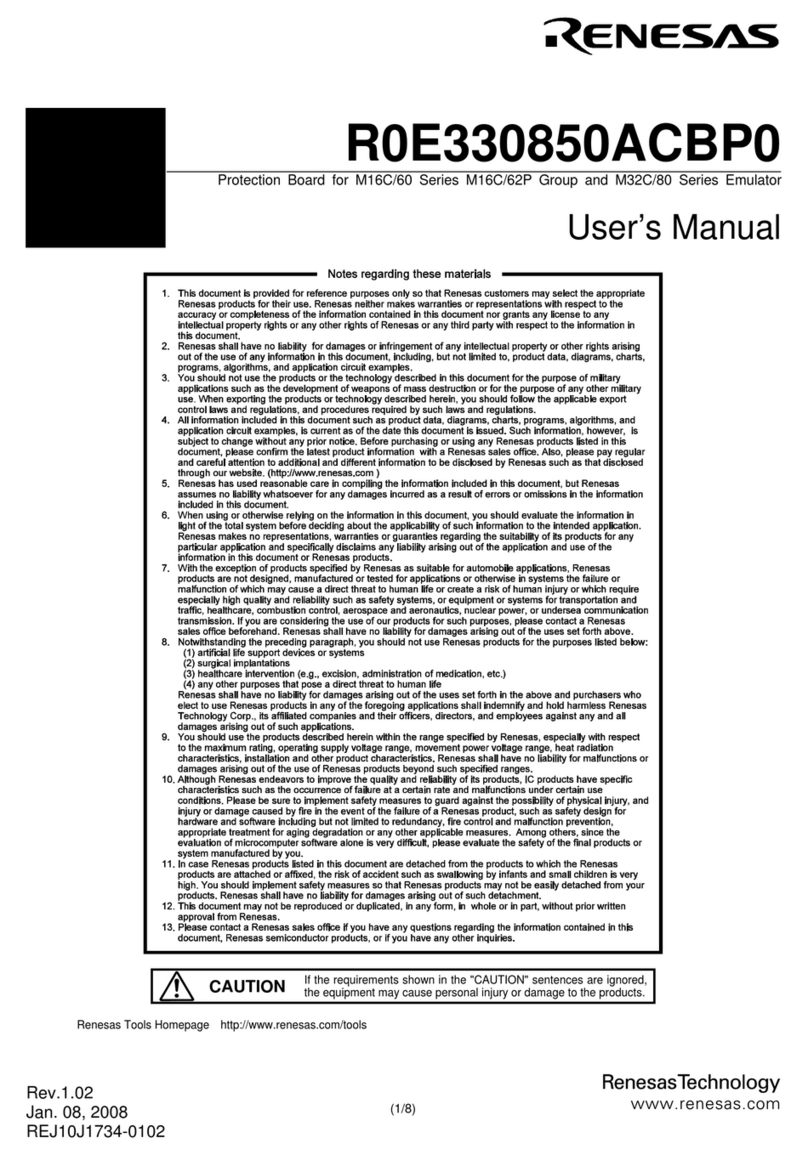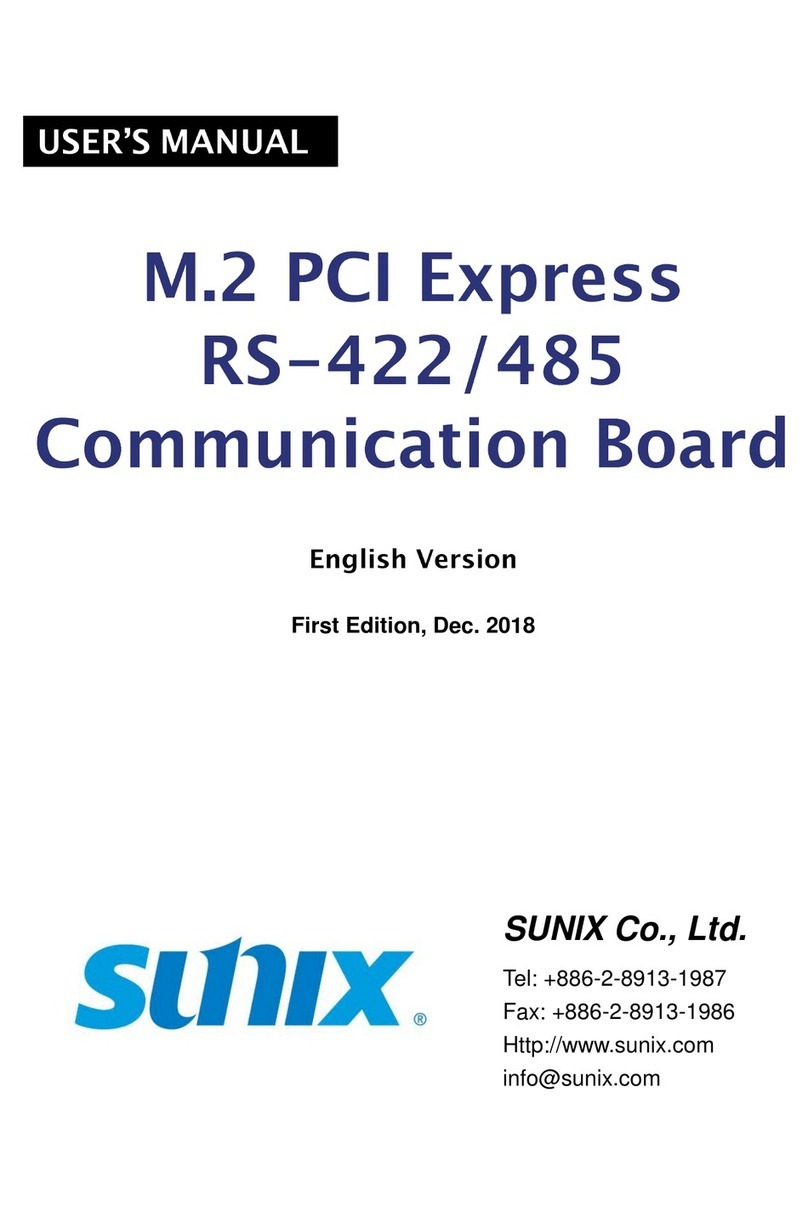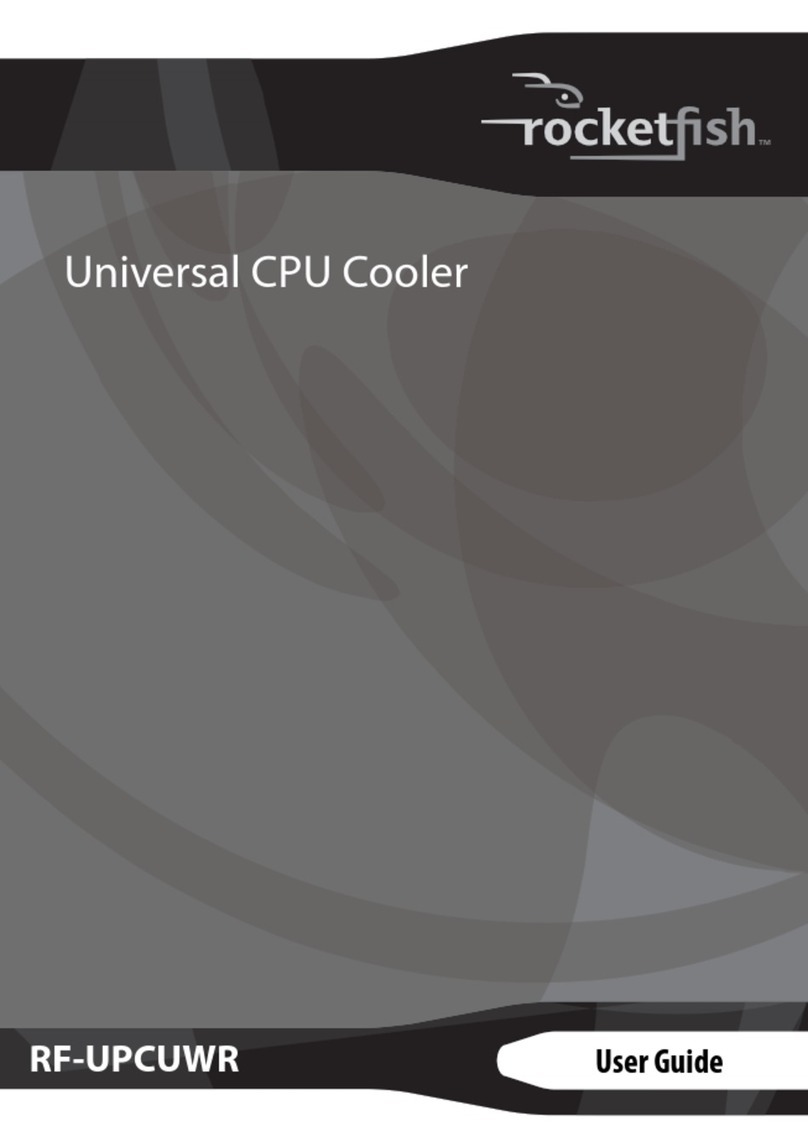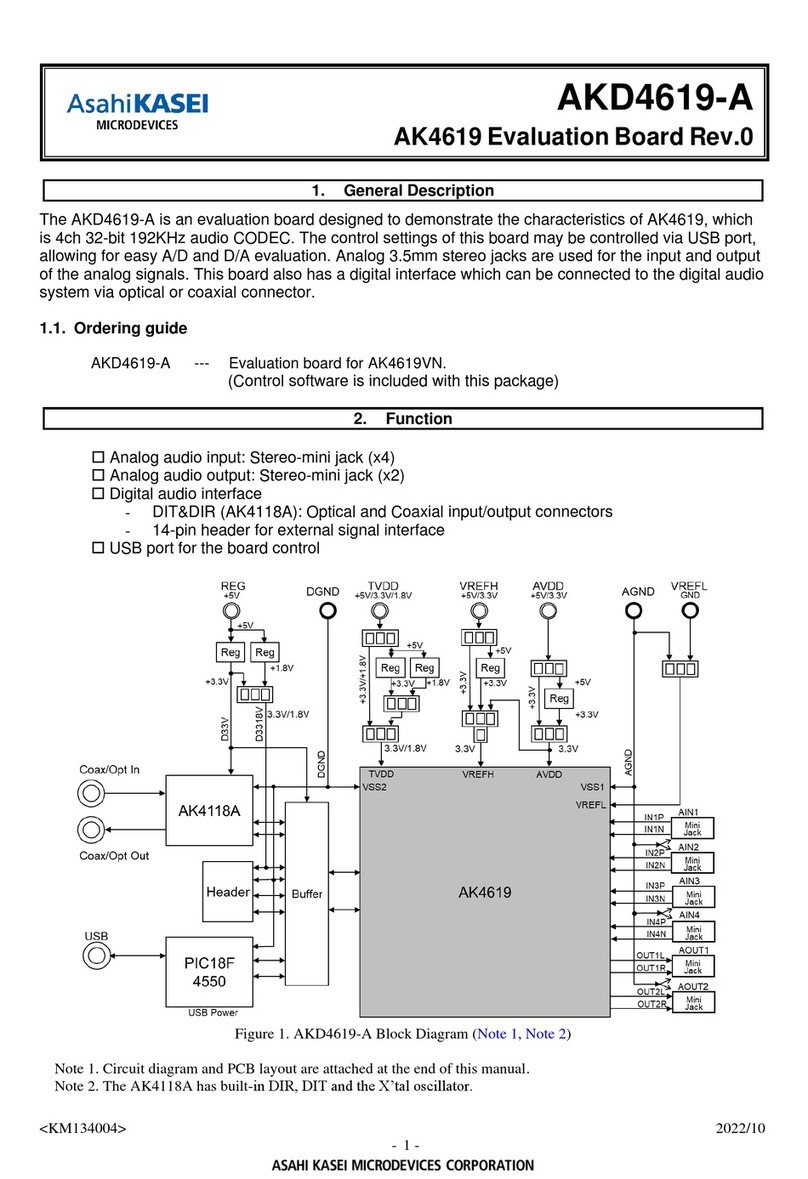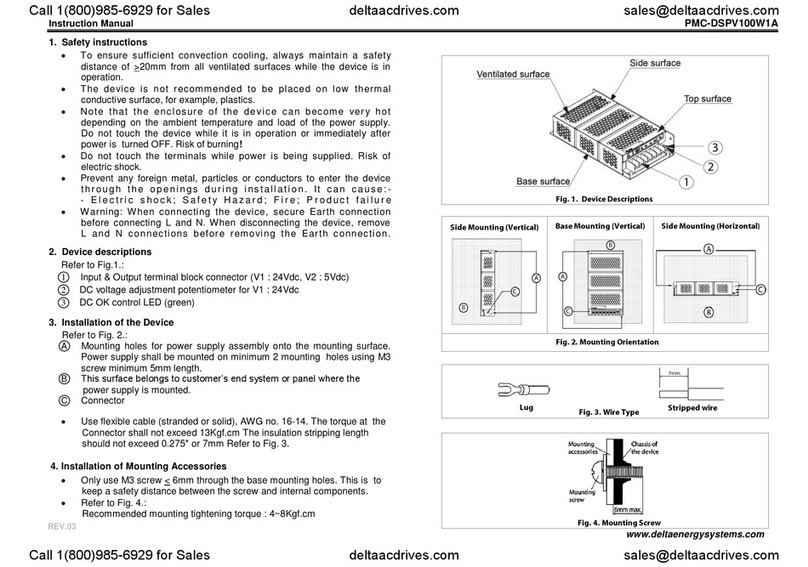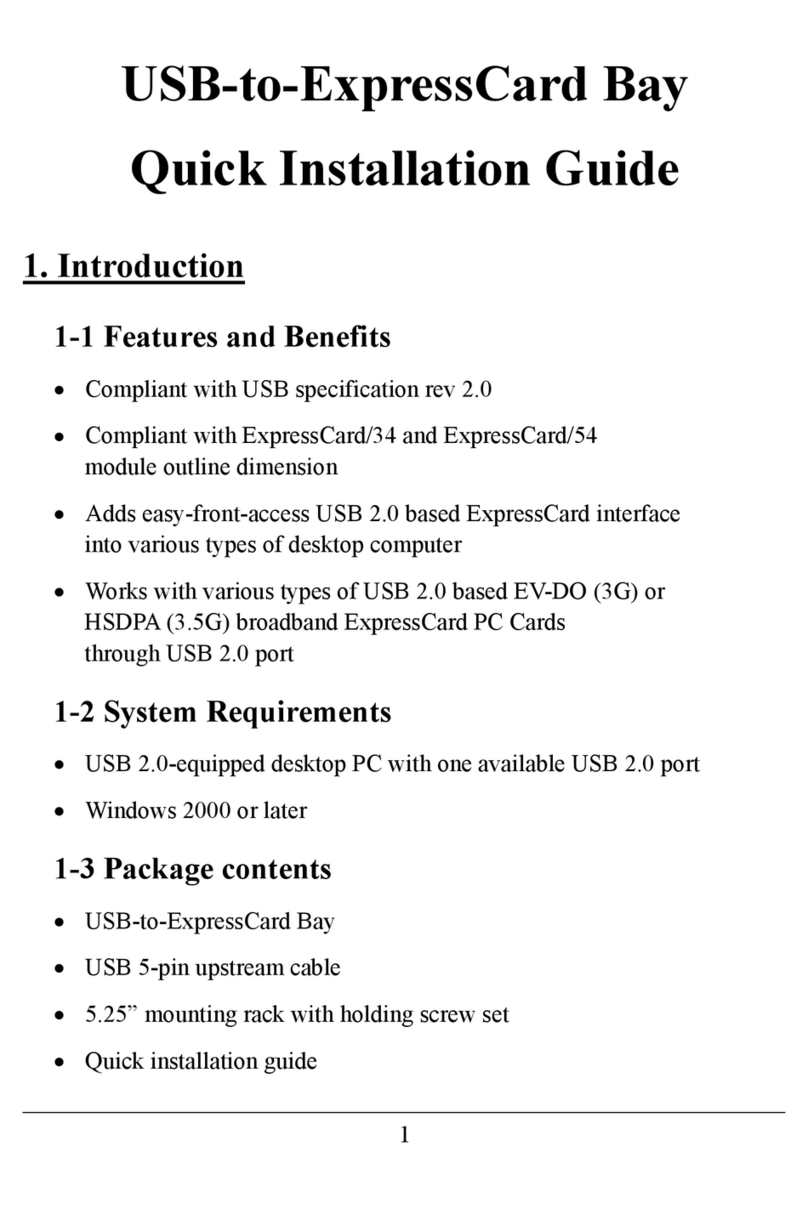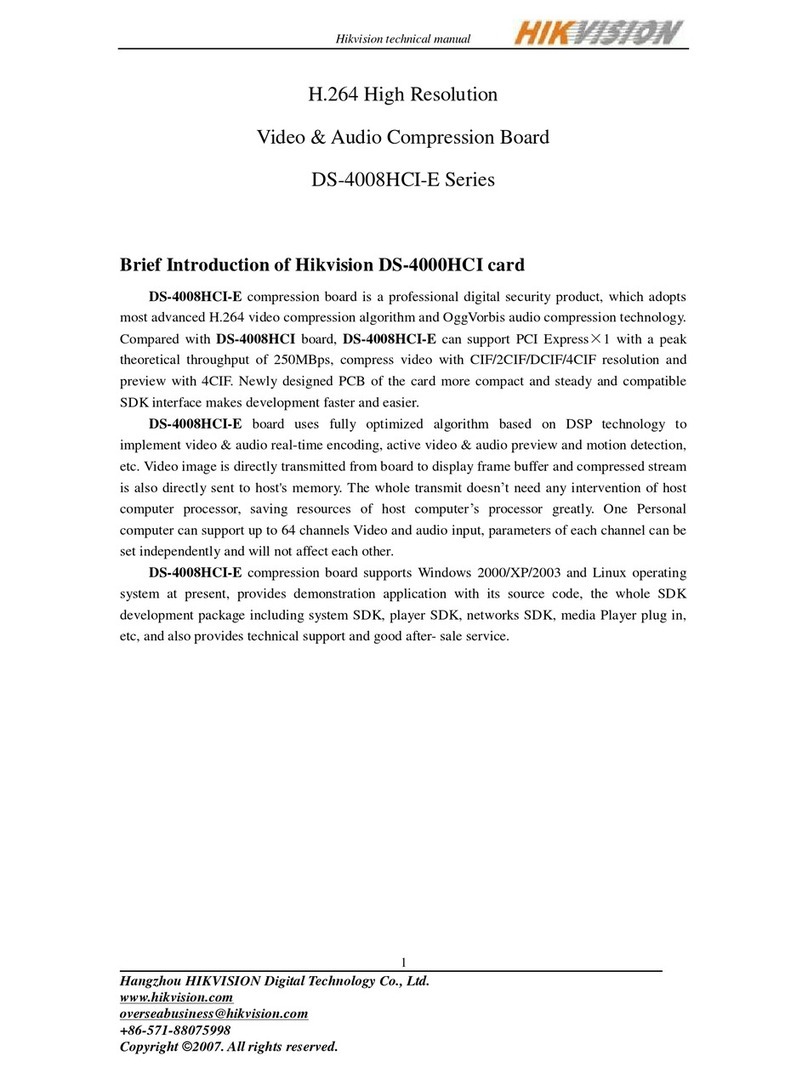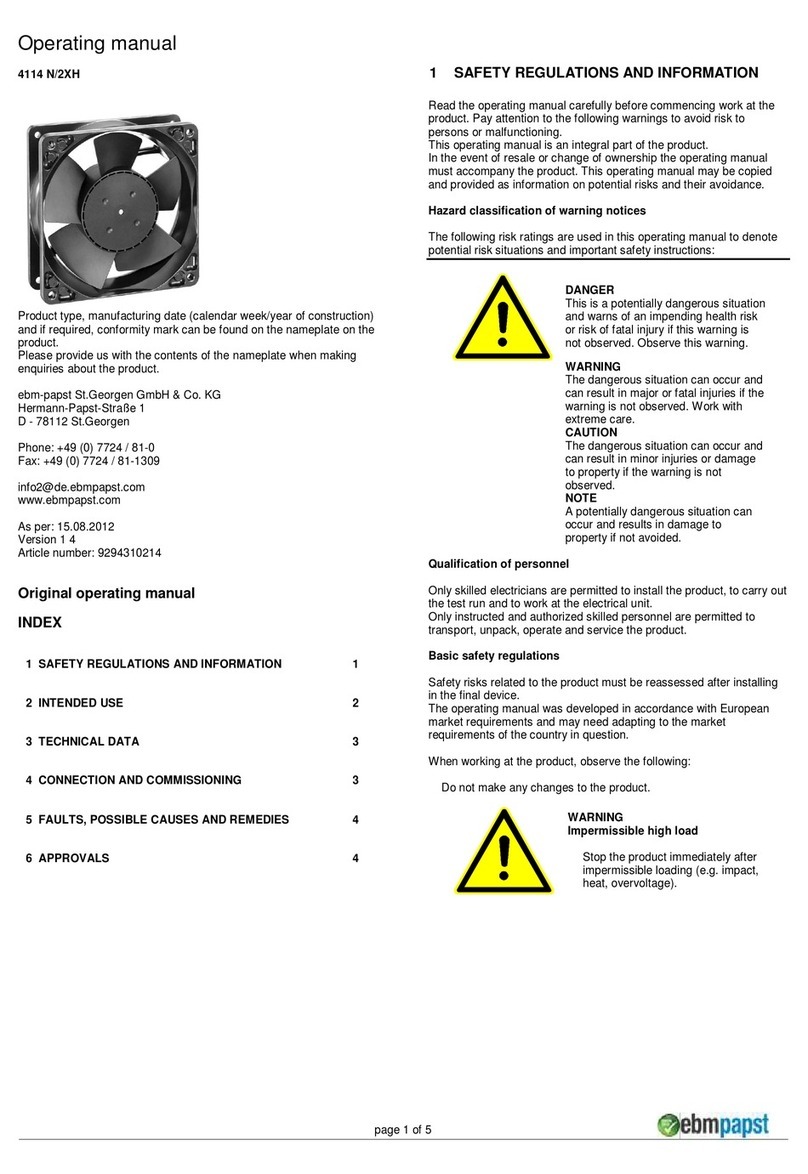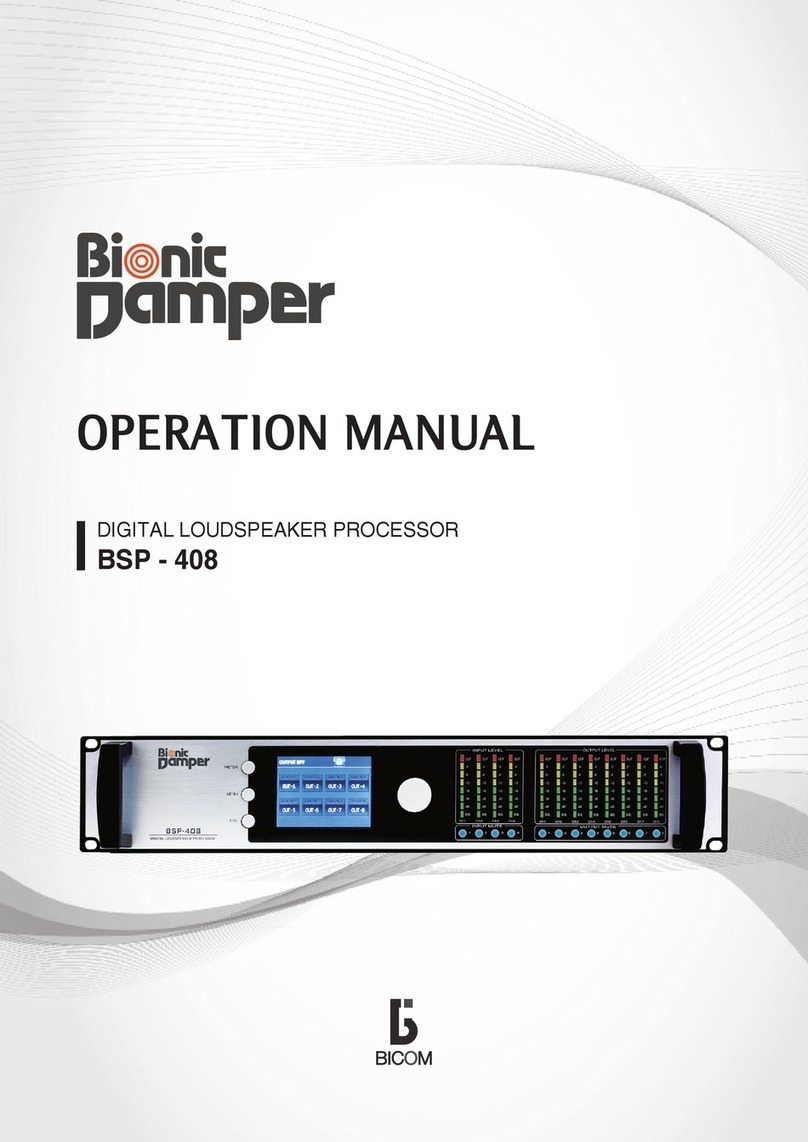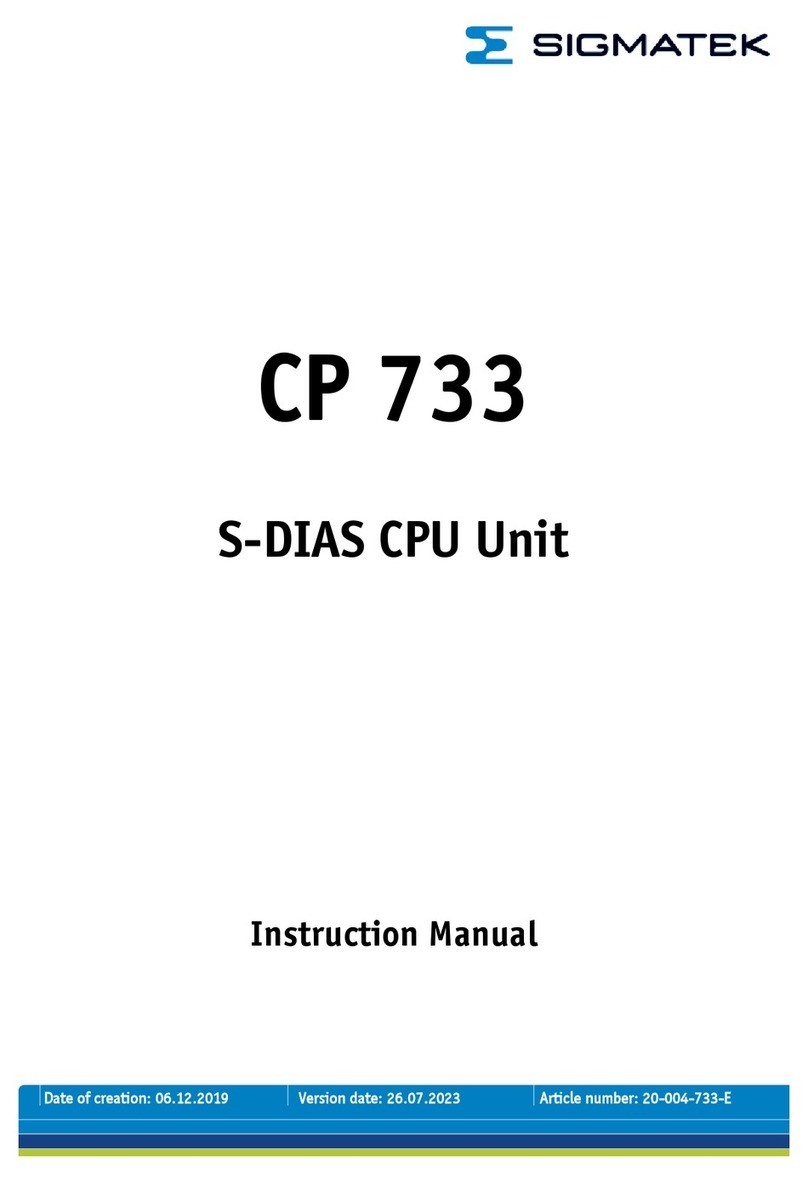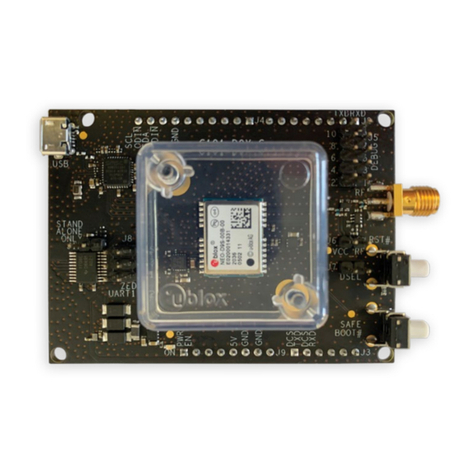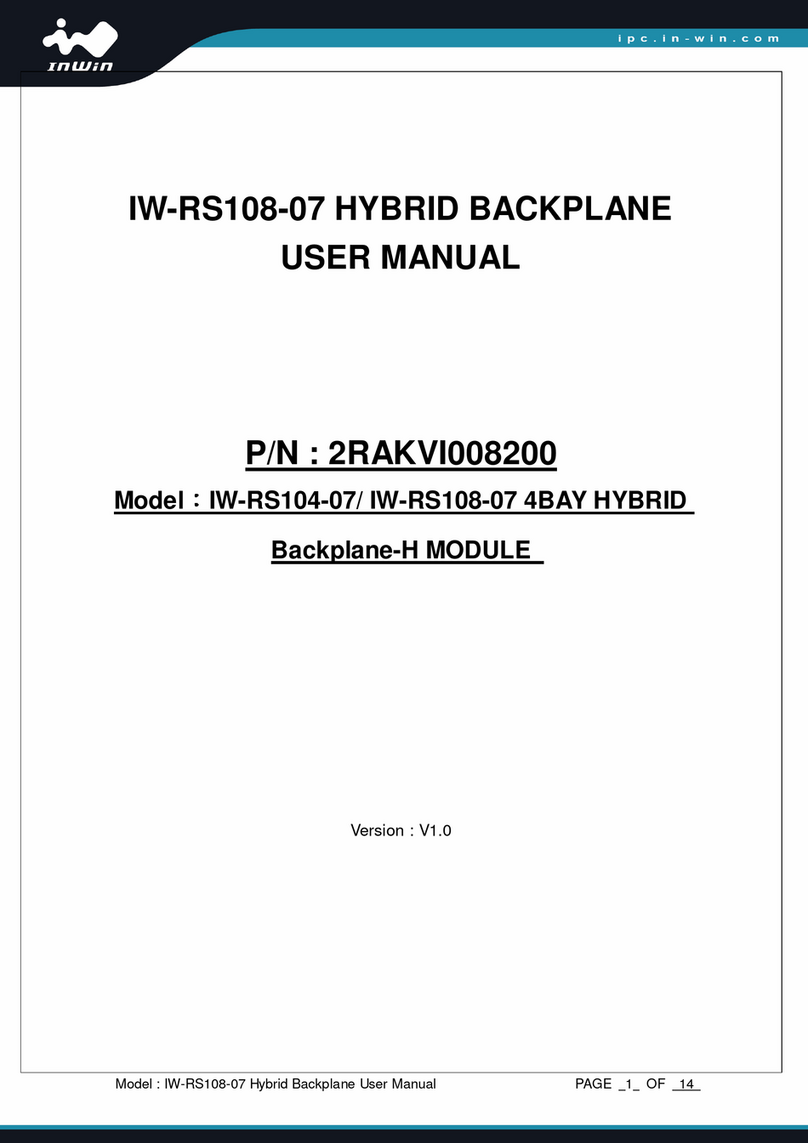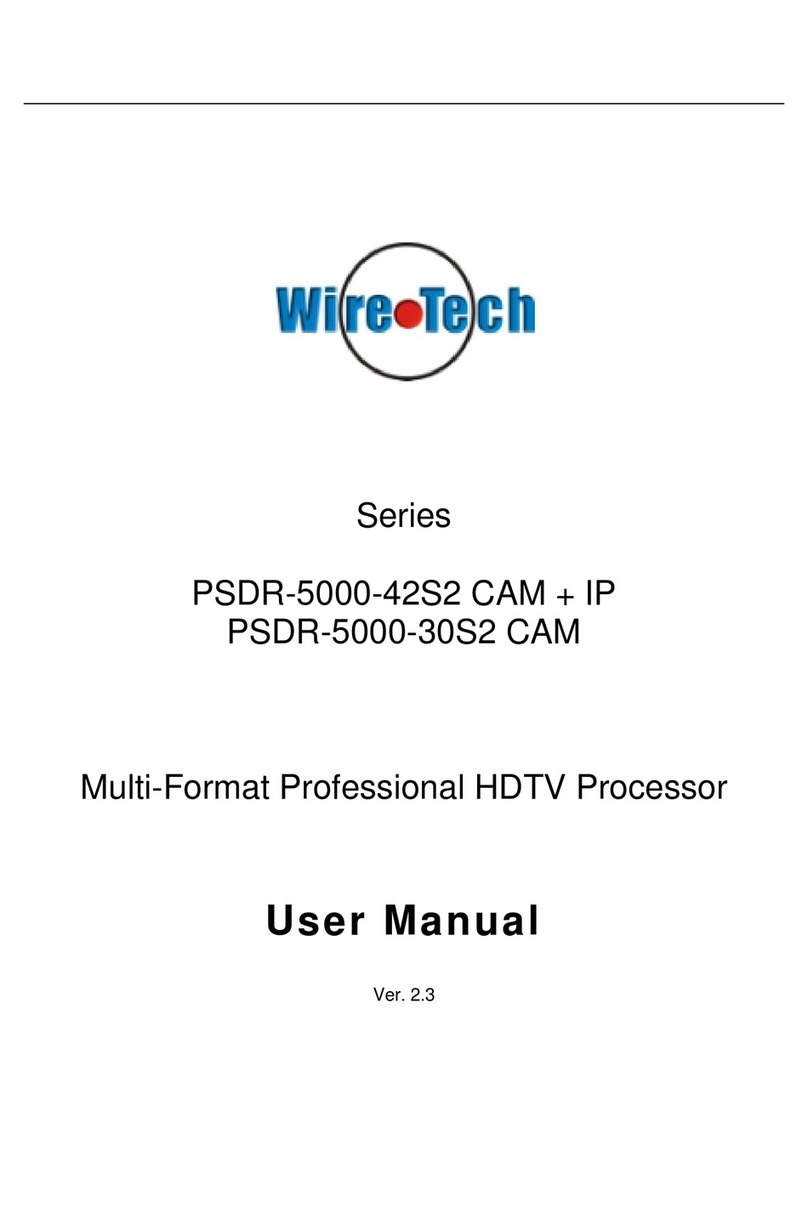Mylex DAC960PTL-0 User manual

AcceleRAID
Installation Guide
AcceleRAID 200™
(DAC960PTL-0)
AcceleRAID 250™
(DAC960PTL-1)
PCI to Ultra2 SCSI
RAID Controllers
Part Number 775007-00
© Copyright 1998 Mylex Corporation.
All Rights Reserved.
All contents of this manual are copyrighted by Mylex
Corporation. The information contained herein is the
exclusive property of Mylex Corporation and shall not be
copied, transferred, photocopied, translated on paper, film,
electronic media, or computer-readable form; or otherwise
reproduced in any way, without the express written
permission of Mylex Corporation.

Greetings
Thank you for purchasing the Mylex AcceleRAID controller. This manual describes the
installation of the Mylex AcceleRAID controllers. Requests for technical information
about this and other Mylex Corporation products should be made to your Mylex
authorized reseller or Mylex marketing representative.
Please Notice
Mylex is a registered trademark, and AcceleRAID and DAC960PTL are a trademarks of
Mylex Corporation.
Microsoft, MS-DOS and Windows are registered trademarks of the Microsoft
Corporation. Novell is a registered trademark of Novell corporation. UnixWare is a
registered trademark of Santa Cruz Operations. Other names that are trademarks may be
used herein for the purpose of identifying the products or services of their respective
owners.
Unless otherwise noted, companies, names and data used in examples herein are fictitious.
Our Policy
Although reasonable efforts have been made to assure the accuracy of the information
contained herein, this publication could include technical inaccuracies or typographical
errors. Mylex Corporation expressly disclaims liability for any error in this information,
and for damages, whether direct, indirect, special, exemplary, consequential or otherwise,
that may result from such error, including but not limited to loss of profits resulting from
the use or misuse of the manual or information contained therein (even if Mylex
Corporation has been advised of the possibility of such damages). Any questions or
comments regarding this document or its contents should be addressed to Mylex
Corporation at the address shown on the cover.
The following paragraph does not apply to the United Kingdom or any country where such
provisions are inconsistent with local law:
MYLEX CORPORATION PROVIDES THIS PUBLICATION “AS IS” WITHOUT
WARRANTY OF ANY KIND, EITHER EXPRESS OR IMPLIED, INCLUDING, BUT
NOT LIMITED TO, THE IMPLIED WARRANTIES OF MERCHANTABILITY OR
FITNESS FOR A PARTICULAR PURPOSE.
Some states do not allow disclaimer of express or implied warranties or the limitation or
exclusion of liability for indirect, special, exemplary, incidental or consequential damages
in certain transactions; therefore, this statement may not apply to you. Also, you may have
other rights which vary from jurisdiction to jurisdiction.
Information in this publication is subject to change without notice and does not represent a
commitment on the part of Mylex Corporation. Changes may be made periodically to the
information herein; these changes will be incorporated in new editions of the publication.
Mylex Corporation reserves the right to make improvements and/or changes at any time in
the product(s) and/or program(s) described in this publication.
It is possible that this publication may contain reference to, or information about, Mylex
Corporation products (machines and programs), programming or services that are not
announced in your country. Such references or information must not be construed to mean
that Mylex Corporation intends to announce, provide, or make available such Mylex
products, programming, or services in your jurisdiction.

About This Manual
This installation guide covers hardware set-up and configuration procedures
necessary for the installation of Mylex AcceleRAID PCI to Ultra SCSI
RAID controllers.
Chapter 1 describes the controllers, standard package contents, and user-
supplied items necessary for installation.
Chapter 2 describes steps to be performed prior to controller installation.
Chapter 3 describes the physical installation of the controller.
Chapter 4 describes controller start-up and the BIOS resident utilities.
Appendix A describes hardware and environmental specifications.
Appendix B describes error messages and how to correct problems causing
errors.
Appendix C provides regulatory information.
Conventions
Throughout the manual, the following conventions are used to describe user
interaction with the product:
prompt This style of type indicates screen display messages
Enter Press the key labeled “Enter” (or “Delete”, etc.)
☛Note
Supplementary information that can have an effect on
system performance
mCaution
Notification that a proscribed action has the potential
to adversely affect equipment operation, system
performance, or data integrity
,WARNING
Notification that a proscribed action will definitely
result in equipment damage, data loss, or personal
injury


Manual No. 775007 v
Contents
Chapter 1
Introduction
Product Description........................................................................... 1-1
Controller Features and Functions............................................. 1-2
Operating System Support................................................................ 1-3
Standard Package Contents ............................................................. 1-3
Hardware.................................................................................... 1-3
Software..................................................................................... 1-3
User-supplied Items .......................................................................... 1-4
Chapter 2
Preinstallation Planning
SCSI Termination............................................................................. 2-2
AcceleRAID 200 Termination..................................................... 2-2
AcceleRAID 250 Termination..................................................... 2-4
SCSI Cabling..................................................................................... 2-6
SCSI Drive Preparation..................................................................... 2-8
Chapter 3
Installation
This chapter describes: ..................................................................... 3-1
Before You Begin.............................................................................. 3-1
Connectors and Jumpers .................................................................. 3-2
Installing the Controller...................................................................... 3-3
Chapter 4
Controller Start-up
Procedural Overview......................................................................... 4-1
Controller Start-up............................................................................. 4-2
BIOS Start-up Sequence............................................................ 4-2
BIOS Configuration Utility .......................................................... 4-3
Other BIOS Options ................................................................... 4-3
Additional Steps to Set Up an Array.................................................. 4-6
Device Drivers............................................................................ 4-6
Global Array Manager (GAM)..................................................... 4-6
What to Check in Case of Problems.................................................. 4-6

vi AcceleRAID Installation Guide
Appendix A
AcceleRAID Specifications
General Hardware Specifications...................................................... A-1
AcceleRAID................................................................................ A-1
Environmental Specifications............................................................. A-2
DAC960PTL Block Diagram.............................................................. A-3
Appendix B
AcceleRAID Error Messages
Error Messages ................................................................................. B-1
Start-up Error Messages............................................................ B-1
Drive Check Error Messages...................................................... B-1
Aborted Installation............................................................................ B-2
NVRAM Error ............................................................................. B-2
System Reboot or Power Down......................................................... B-3
Appendix C
Regulatory Information
FCC Class B Compliance.......................................................... C-1
FCC Declaration of Conformity.................................................. C-2
Community of Europe................................................................ C-3
Underwriters Laboratories......................................................... C-4
Glossary

Manual No. 775007 1-1
Chapter 1
Introduction
This chapter describes:
• Product description
• Standard package contents
• User supplied items
Figure 1-1. AcceleRAID Disk Array Controllers
Product Description
The Mylex AcceleRAID™ 200 (DAC960PTL-0™) and AcceleRAID™ 250
(DAC960PTL-1™) controllers are I2O ready, half-length, PCI to Ultra2
SCSI RAID controllers designed to add RAID capability to SCSI channels
that are resident on a system board. Mylex AcceleRAID controllers supply
the necessary signals that enable SCSI Interrupt Steering Logic (SISL)
hardware to capture and control the embedded SCSI channels(s) on the
system board. This feature implements RAID capabilities on the system
board resident SCSI channels.
The AcceleRAID 200 controller must reside in a PCI slot specifically pre-
configured to support SISL. The AcceleRAID 250 may reside in the
dedicated slot, or in any other PCI slot. System boards that support the
AcceleRAID controllers include the Intel®N440BX server board.
AcceleRAID 200 AcceleRAID 250

Product Description
1-2 AcceleRAID Installation Guide
Controller Features and Functions
AcceleRAID 200 Features:
• SISL to implement RAID on system board resident SCSI channels
• Support for Wide and Narrow Ultra2 SCSI LVD, and most other SCSI
drive types
☛Note
Supported SCSI drive types include SCSI-1, Fast
SCSI, Wide Fast SCSI, Ultra SCSI, Wide Ultra SCSI,
and Wide Ultra2 SCSI.
• Full support of RAID plug-and-play, for I2O compliant system boards
• Supports RAID levels 0, 1, 3, 5, 0+1, 10, 30, 50, and JBOD on
embedded SCSI controller(s)
• On-board, high performance RISC processor and EDO ECC DRAM
cache for high speed, fault tolerant I/O transfers
• 512KB, 8-bit flash EEPROM for BIOS and code supports future
enhancements through firmware upgrades
AcceleRAID 250 Features
Includes all of the features of the AcceleRAID 200, plus the following:
• An additional Wide Ultra2 SCSI RAID LVD channel on the controller
to extend the number of channels on the system board
• Ability to operate in an ordinary (not specifically configured) PCI slot
as a single channel controller
☛Note
The AcceleRAID 250 will work as a single-channel,
Wide Ultra2 SCSI LVD RAID controller with a
system board that has an available PCI slot.
A specially configured, dedicated PCI slot is required
to enable SISL, which allows the controller to add
RAID capability to the system board’s built-in SCSI
channels.

Introduction
Manual No. 775007 1-3
Operating System Support
MS-DOS 5.x, 6.x, and above are supported using drivers that reside in the
AcceleRAID BIOS. Many other popular operating systems are supported
using software drivers in the Disk Array Controller Software Kit that is
included with the AcceleRAID controller (see the Disk Array Controller
Software Kit Installation Guide and User Manual – P/N 771929)
Standard Package Contents
The following items are supplied with the standard shipping package:
Hardware
• AcceleRAID 200 or AcceleRAID 250 Disk Array Controller with
documentation
Software
• Disk Array Controller Configuration (DACCF) utility with
documentation
• Disk Array Controller Software Kit (OS drivers, and GAM Server)
with documentation
• Global Array Manager (GAM client) with documentation
Figure 1-2. Standard Package Contents
User Manuals Software
Utilities &
Drivers
GAM Client
Software &
User Manual
AcceleRAID
C
ontroller

User-supplied Items
1-4 AcceleRAID Installation Guide
User-supplied Items
The following user-supplied items are required to perform this installation:
• Compatible host system with a PCI slot prewired for SCSI Interrupt
Steering Logic control of the embedded SCSI channel(s)
• Network operating system software (as required
• Static grounding strap or electrostatic discharge (ESD) safe work area
• Disk array enclosure (or equivalent) and SCSI disk drives
☛Note
The supported SCSI drive types include Ultra2 SCSI
with LVD as well as the following single-ended SCSI
types: SCSI-1, Fast SCSI, Wide Fast SCSI, Ultra
SCSI, and Wide Ultra SCSI.
• SCSI cables to connect between the system board SCSI connectors and
disk drives (and if an AcceleRAID 250 is installed, between the
AcceleRAID controller and disk drives).
Figure 1-3. AcceleRAID 250 External Connector (0.8mm UHD Centronics 68F):
68-Pin Very High Density Cable Interconnect (VHDCI)
Figure 1-4. AcceleRAID 250 Internal Connector (HD DB68F):
68-Pin High Density

Manual No. 775007 2-1
Chapter 2
Preinstallation Planning
This chapter describes:
• SCSI termination
• SCSI cabling
• SCSI drive preparation
There are some configuration steps that need to be performed prior to
installing an AcceleRAID controller into the system. These steps include:
checking the SCSI termination requirements, selecting the appropriate SCSI
cabling, and preparing the SCSI drives for use in the array.
Figure 2-1. AcceleRAID Controllers
AcceleRAID 200
AcceleRAID 250

SCSI Termination
2-2 AcceleRAID Installation Guide
SCSI Termination
Correct termination is critical for the SCSI channels. Termination on the end
of the cable connecting the disk drives (or other SCSI devices) is required.
If an AcceleRAID 250 is installed, the controller’s termination is
automatically set.
AcceleRAID 200 Termination
The system board contains the SCSI I/O chips and termination used by the
AcceleRAID controller. Refer to the instructions and/or specifications
furnished with the system board for information regarding how termination
is implemented.
See Figure 2-2 for an example of terminating an internal – external drive
configuration.
☛Note
For purposes of this discussion, it is assumed that the
illustrated internal and external connectors are both on
the same SCSI channel.
It is better to terminate the ends of the SCSI bus itself
than it is to terminate the end devices on the bus. This
allows hot swap devices to be added or removed from
the SCSI bus without affecting termination.

Preinstallation Planning
Manual No. 775007 2-3
Figure 2-2. System Board SCSI Termination Examples
T
Internal Drive
Configuration
T
SCSI Termination
on System Board
Must be Enabled
AcceleRAID Controller
T
External Drive
Configuration
SCSI Termination
on System Board
Must be Enabled
AcceleRAID Controller
T
T
T
Internal – External
Drive Configuration
SCSI Termination
on System Board
Must be Disabled
AcceleRAID Controller

AcceleRAID 250 Termination
2-4 AcceleRAID Installation Guide
AcceleRAID 250 Termination
The AcceleRAID 250 is equipped with automatic SCSI termination
circuitry. If the controller is at the end of the SCSI bus, it automatically
enables on-board termination.
If all the SCSI devices on the channel are connected either to the internal
connector or to the external connector, the end of the SCSI bus farthest from
the controller must have a terminator installed. In this case, the controller
automatically enables on-board termination. See Figure 2-3 for examples of
internal or external drive configurations.
If some SCSI devices on the channel are connected to the internal connector,
and some are connected to the external connector, the two ends of the SCSI
bus farthest from the controller must each be terminated. In this case, the
controller automatically disables on-board termination.See Figure 2-3 for an
example of an internal – external drive configuration.
☛Note
The illustrated internal and external connectors are
both on the same channel.
It is better to terminate the ends of the SCSI bus itself
than it is to terminate the end devices on the bus. This
allows hot swap devices to be added or removed from
the SCSI bus without affecting termination.

Preinstallation Planning
Manual No. 775007 2-5
Figure 2-3. AcceleRAID 250 SCSI Termination Examples
T
Auto Termination
Enabled
External Drive
Configuration
T
T
T
Auto Termination
Disabled
Internal – External
Drive Configuration
T
Auto Termination
Enabled
Internal Drive
Configuration
T

SCSI Cabling
2-6 AcceleRAID Installation Guide
SCSI Cabling
An Ultra SCSI or an Ultra2 SCSI channel supports up to 15 drives.
mCaution
Wide and narrow SCSI drives must not be installed
together on any one channel, or AcceleRAID
controller malfunction may occur.
LVD Mode
The controller supports Ultra2 SCSI with LVD. If all drives attached to a
controller drive channel support Ultra2 SCSI with LVD, then that channel
will operate at 40 mega-transfers per second (or 80 MB with Wide Ultra2
SCSI). This setup allows a maximum SCSI bus length of up to 12 meters.
☛Note
The SCSI bus length can be extended to 25 meters if
only the controller and one drive are on the bus.
Single-ended Mode
If any device on the channel is not Ultra2 SCSI capable, the channel will
revert to single-ended operation mode. The SCSI bus lengths will then be
limited to the single-ended bus lengths shown in Table 2-1.

Preinstallation Planning
Manual No. 775007 2-7
*SCSI Trade Association (STA) Terms
† The maximum number of devices allowed on a Wide Ultra SCSI bus is 8 unless
bus extender technology is used
Table 2-1. Supported SCSI Formats and Bus Lengths
SCSI Drive Type*
Bus
Speed,
MB/Sec,
Max.
Bus
Width,
Bits
Max. Bus Length, Meters* Max. Device
Support
(Including
Controller)
Single-ended Low-Voltage
Differential
SCSI-1 5 8 6 - 8
Fast SCSI 10 8 3 - 8
Fast Wide SCSI 20 16 3 - 16
Ultra SCSI 20 8 1.5 - 8
Ultra SCSI 20 8 3 - 4
Wide Ultra SCSI 40 16 - - 16†
Wide Ultra SCSI 40 16 1.5 - 8
Wide Ultra SCSI 40 16 3 - 4
Ultra2 SCSI 40 8 Not Defined 12 8
Wide Ultra2 SCSI 80 16 Not Defined 12 16

SCSI Drive Preparation
2-8 AcceleRAID Installation Guide
SCSI Drive Preparation
Prepare the drives for installation as follows:
• Remove any terminators attached to the drive or set any drive
termination jumpers to the disabled position.
• Set the SCSI addresses on the drives.
☛Note
Each drive must have a unique ID chosen from 0
through 6 or 8 through 15. ID 7 cannot be used as a
drive ID because it is reserved for the controller.
• Enable termination power on the drives.
Refer to the drive manual for specific information about drive configuration
settings.
☛Note
The supported SCSI drive types include Ultra2 SCSI
with LVD as well as the following single-ended SCSI
types: SCSI-1, Fast SCSI, Wide Fast SCSI, Ultra
SCSI, Wide Ultra SCSI, and Wide Ultra2 SCSI.
mCaution
If wide drives are to be connected to a narrow SCSI
connector (by a 68-pin to 50-pin adapter), the 8-bit
bus width parameter must be set first, using DACCF.
Instructions on how to force the 8-bit bus width are in
the Disk Array Controller Configuration Utilities
(DACCF) Installation Guide and User Manual
(P/N 771953), under “Advanced Parameters.”

Manual No. 775007 3-1
Chapter 3
Installation
This chapter describes:
• Before you begin
• Connectors and Jumpers
• Safety considerations
• Installing the controller
Before You Begin
Installing an AcceleRAID PCI to Ultra2 SCSI RAID controller is no more
difficult than installing any PCI adapter card. Follow these steps and then
follow the installation procedures in this chapter.
,WARNING
Disconnect the system from the electrical wall
outlet before opening the system cabinet. Working
with the system covers off and power applied to the
system can result in shock and serious injury.
1. Power off the system and disconnect the power cables before starting
the installation. Refer to the instructions provided in your system
documentation. Do not disconnect cables or power cords while system
power is on.
2. Read all of the instructions in this chapter completely before proceed-
ing. Follow the Notes, Cautions, and Warnings described in this manual
and marked on the equipment.
3. Safety check the installation before powering on the system.
• Make sure that all of the cabling Pin 1 locations are correct and that
all cables are firmly seated in the connectors.
• Make sure all SCSI conventions (cable type, cable length,
termination, SCSI IDs, etc.) are followed.

Connectors and Jumpers
3-2 AcceleRAID Installation Guide
Connectors and Jumpers
mCaution
Anti-static handling procedures are required. Leave
the controller in its anti-static bag until it is time to
plug the controller into the PCI slot. The use of a
grounded wrist strap and other ESD protective
measures are highly recommended.
The AcceleRAID controller jumper locations are illustrated in Figure 3-1.
Figure 3-1. AcceleRAID Jumpers and Connectors
Table 3-1. AcceleRAID Jumper Descriptions
Component Description Default
JP4 Serial Port Connector for Debug (TTL level) –
JP5 Not Used Off
JP10 Enables SCSI Interrupt Steering Logic (SISL) control On
J1 Channel 0 Internal Ultra2 SCSI LVD Connector –
68-Pin High Density –
J2 Channel 0 External Ultra2 SCSI LVD Connector –
68-Pin Very High Density Cable Interconnect (VHDCI) –
JP4
J1
Internal Connector
(68-Pin High Density) JP5
Note:
J1 and J2 are both on the same Channel.
J2
External
Connector
(VHDCI)
JP10
This manual suits for next models
3
Table of contents
Other Mylex Computer Hardware manuals
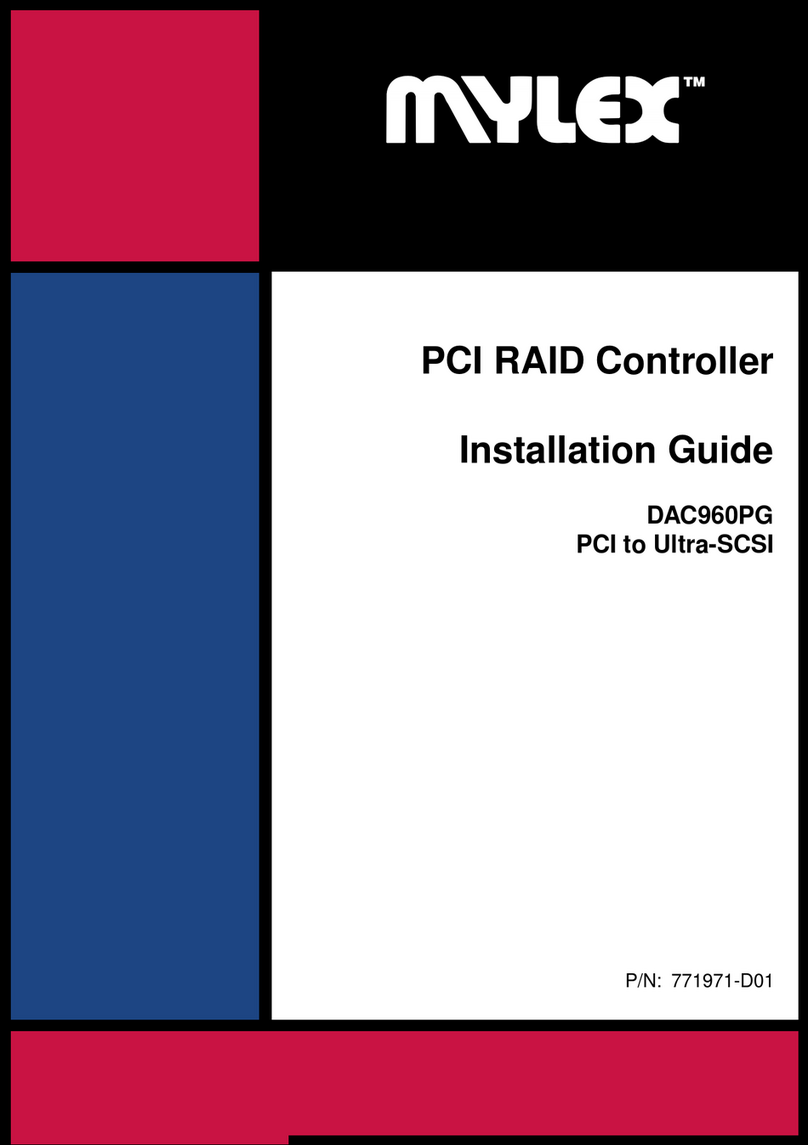
Mylex
Mylex DAC960PG User manual
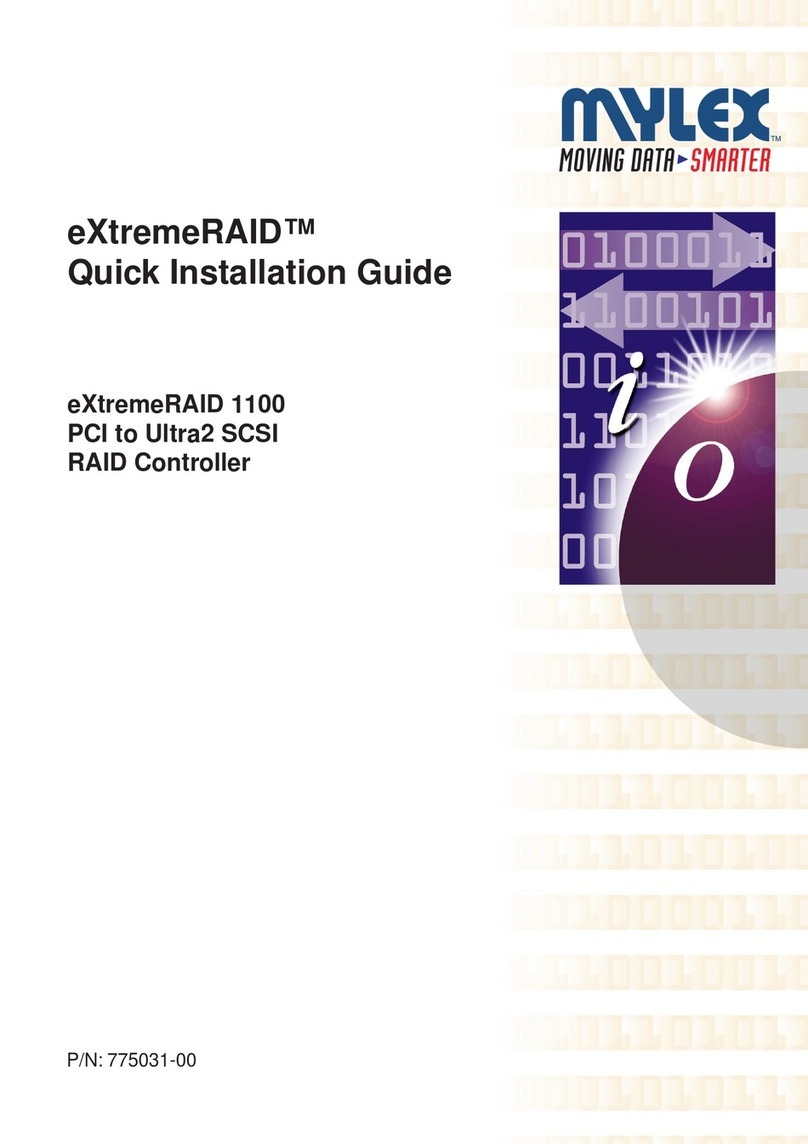
Mylex
Mylex eXtremeRAID User manual
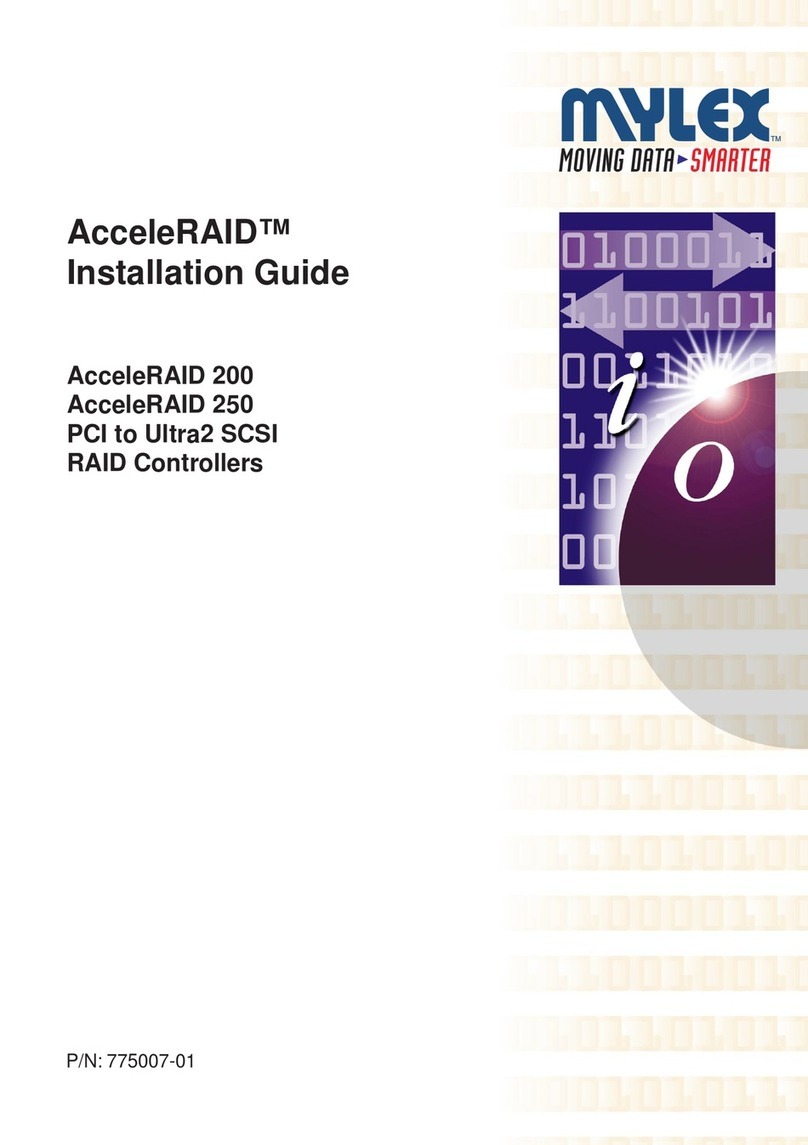
Mylex
Mylex AcceleRAID 200 User manual
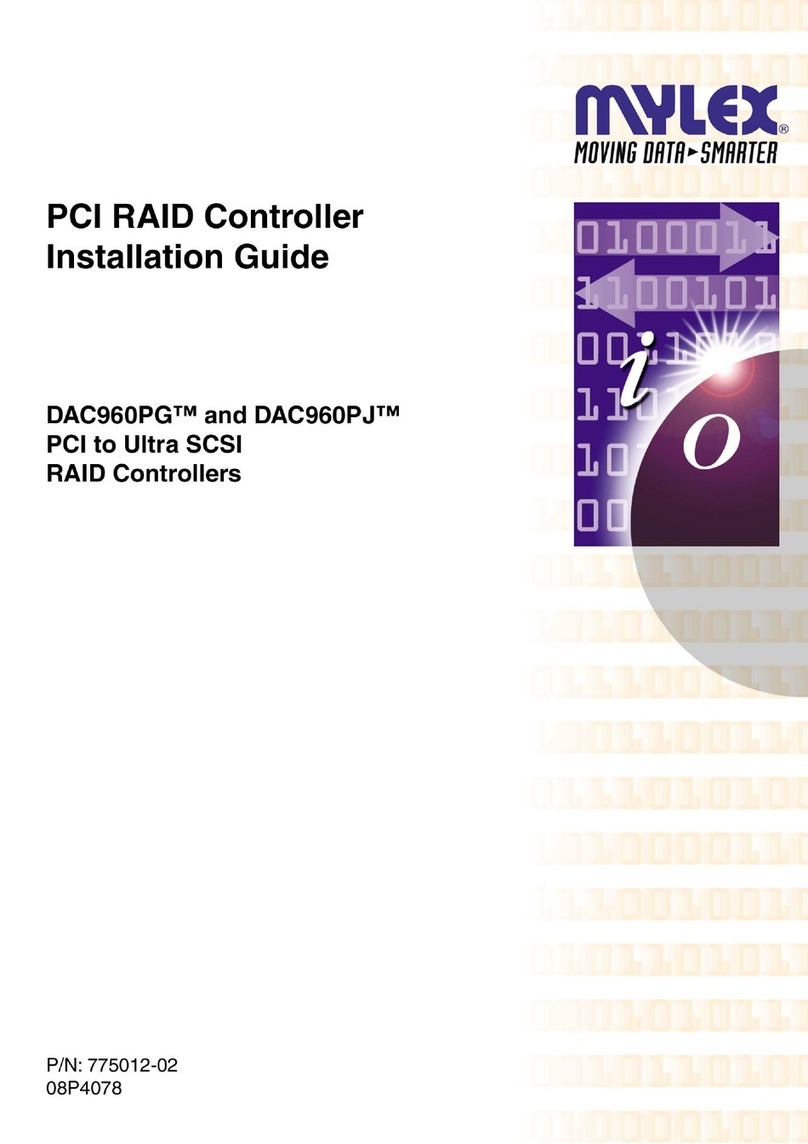
Mylex
Mylex DAC960PG User manual
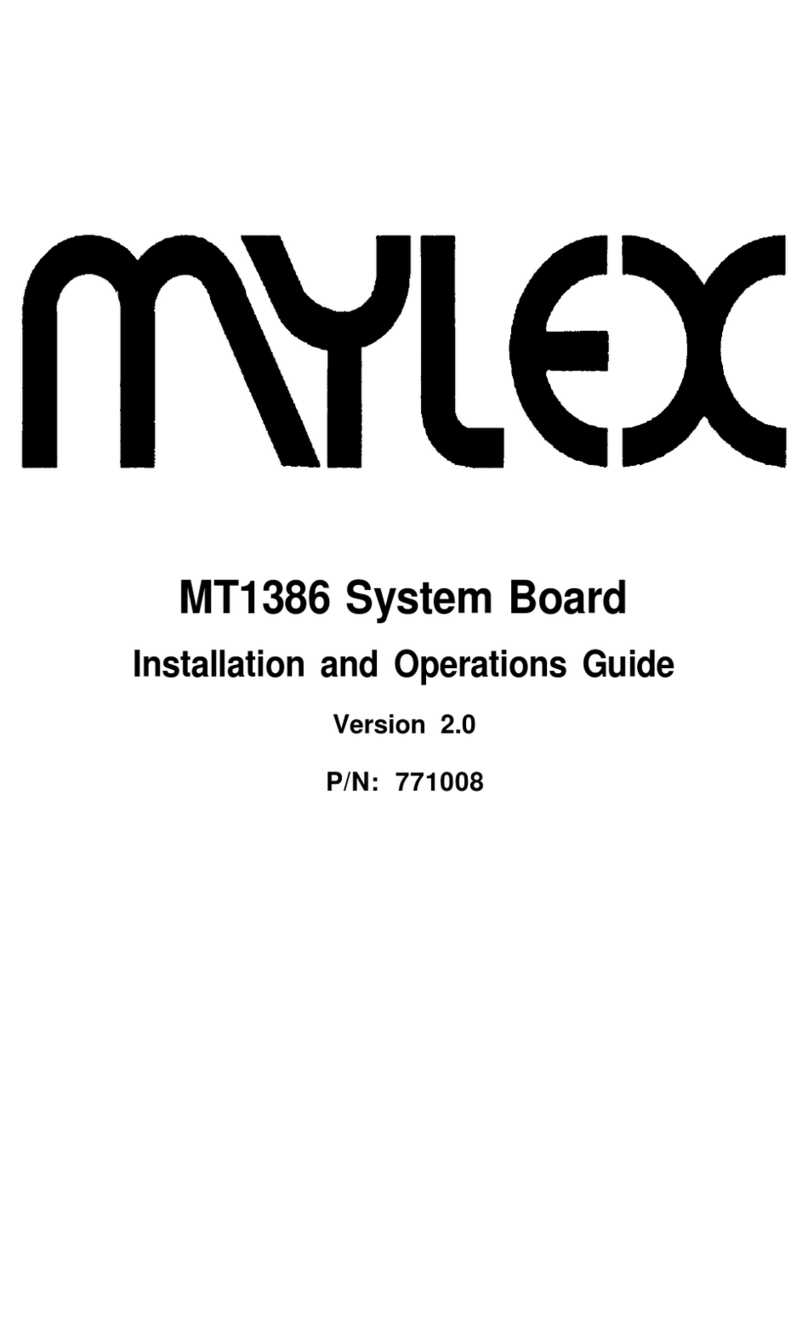
Mylex
Mylex MT1386 Operating instructions

Mylex
Mylex eXtremeRAID 1100 User manual
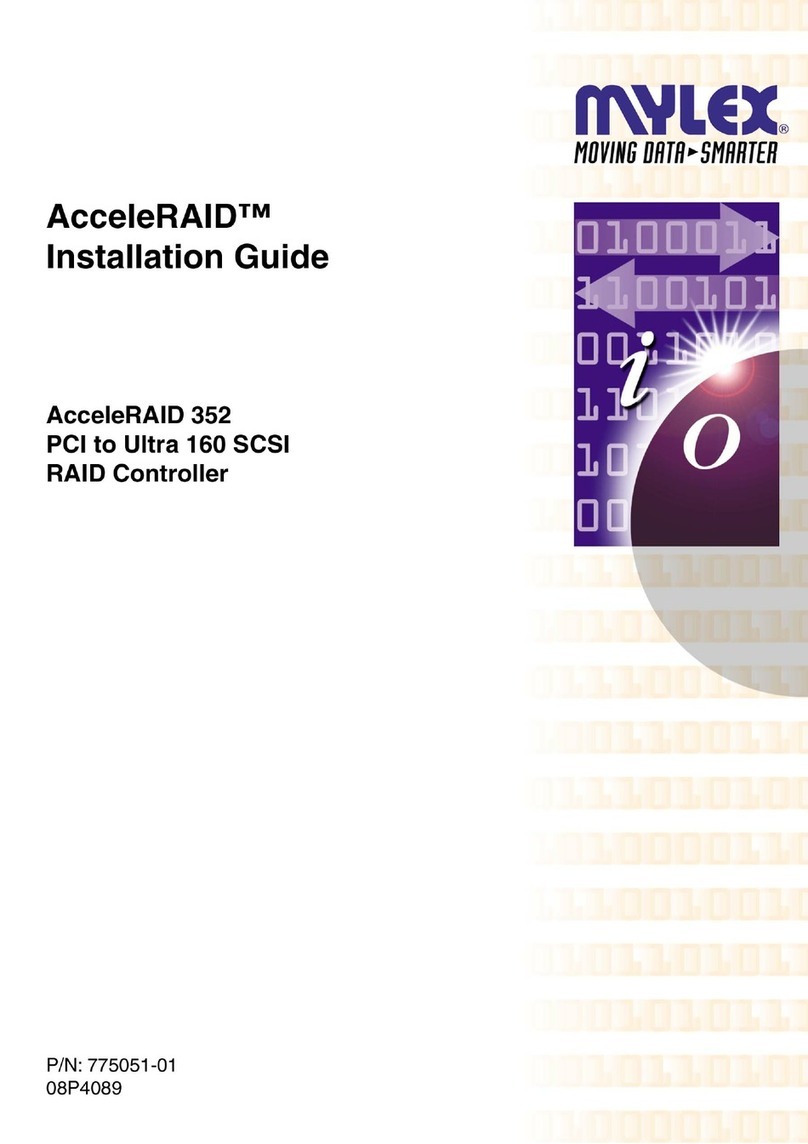
Mylex
Mylex AcceleRAIDTM 352 PCI to Ultra 160 SCSI RAID Controller AcceleRAID... User manual
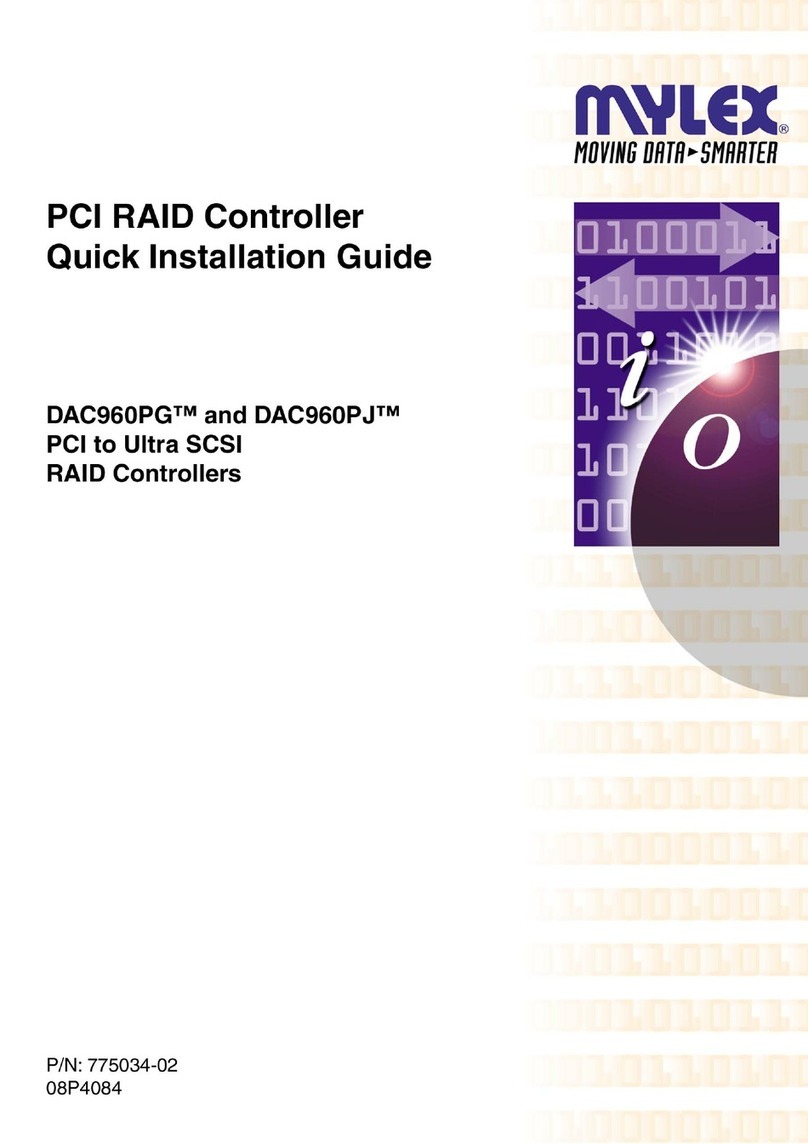
Mylex
Mylex DAC960PG User manual
